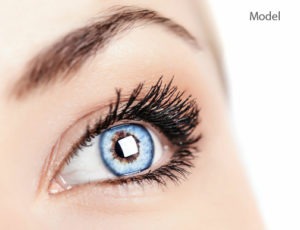 Eyelid lesions can be concerning not only for their potential impact on vision but also for their aesthetic implications. These lesions can vary widely in appearance and severity, from benign lumps to potentially malignant growths. Understanding the different treatment options available for eyelid lesions is crucial for managing their effects and ensuring optimal eye health. This blog post explores various effective strategies for eyelid lesion care, providing insight into medical, surgical, and preventive measures. Khan Eyelid and Facial Aesthetics, led by oculoplastic and reconstructive surgeon Dr. Tanya Khan, provides treatment of eyelid lesions to patients in Plano, Dallas, Austin, Texas, and surrounding locations.
Eyelid lesions can be concerning not only for their potential impact on vision but also for their aesthetic implications. These lesions can vary widely in appearance and severity, from benign lumps to potentially malignant growths. Understanding the different treatment options available for eyelid lesions is crucial for managing their effects and ensuring optimal eye health. This blog post explores various effective strategies for eyelid lesion care, providing insight into medical, surgical, and preventive measures. Khan Eyelid and Facial Aesthetics, led by oculoplastic and reconstructive surgeon Dr. Tanya Khan, provides treatment of eyelid lesions to patients in Plano, Dallas, Austin, Texas, and surrounding locations.
Understanding Different Types of Eyelid Lesions
Eyelid lesions encompass a diverse range of conditions, each with unique features and potential health implications. The most frequently encountered benign lesions include chalazia and styes. Chalazia arise from blocked oil glands and generally manifest as painless lumps, while styes are infections of the eyelid’s oil glands, causing painful, swollen bumps. Additionally, skin tags and cysts often appear on the eyelids; although harmless, they can cause discomfort and may require removal if they interfere with daily activities.
Beyond benign lesions, there are more severe types that warrant careful monitoring and prompt medical attention. Malignant lesions such as basal cell carcinoma, squamous cell carcinoma, and melanoma present more significant health risks. Basal cell carcinoma is the most common form of eyelid cancer and typically appears as a pearly or waxy bump. Squamous cell carcinoma, though less common, is more aggressive and can manifest as a red, scaly patch or a sore that doesn’t heal. Melanoma, the most dangerous type, may present as a dark, irregularly shaped spot on the eyelid.
Other less common but noteworthy lesions include sebaceous gland carcinoma, a rare and aggressive cancer that originates in the oil glands of the eyelid, and Merkel cell carcinoma, a fast-growing, painless nodule that can be red, blue, or flesh-colored.
Early detection and accurate diagnosis are crucial for effective treatment. Visual inspection by a healthcare professional is often the first step, followed by a biopsy to confirm the nature of the lesion. This diagnostic process helps differentiate between benign and malignant growths, ensuring that the appropriate treatment plan is implemented. Understanding these different types of eyelid lesions highlights the importance of regular eye check-ups and staying vigilant about any changes in the appearance or sensation of the eyelids.
Medical Treatments Administered by Healthcare Professionals
Medical treatments offer effective solutions for addressing various types of eyelid lesions. For conditions like chalazia or styes, healthcare professionals often recommend non-invasive methods such as warm compresses and eyelid massages. These techniques help to promote drainage and reduce swelling. When these initial steps are not sufficient, topical antibiotics or steroid ointments may be prescribed to manage infections or inflammation.
For more persistent or bothersome benign lesions, corticosteroid injections can be an effective treatment to decrease inflammation and speed up the healing process. Oral antibiotics might be necessary in cases where the lesion has caused a broader infection, ensuring that the issue is treated from within.
In some instances, non-cancerous lesions may benefit from minor surgical procedures conducted by healthcare professionals. For example, curettage, where the lesion is scraped off, is often employed for certain types of benign growths. Cryotherapy, which involves freezing the lesion with liquid nitrogen, is another option for removing unwanted tissue.
For lesions that exhibit potential malignancy or do not respond to initial treatments, a more aggressive medical approach may be warranted. Prescription medications like imiquimod, which stimulates the immune system to attack abnormal cells, are sometimes used for specific types of lesions, including early-stage skin cancers. Alternatively, topical chemotherapy drugs may be applied directly to the lesion to destroy cancerous cells.
It’s essential for patients to follow their healthcare provider’s recommendations closely and attend regular follow-up appointments to monitor the lesion’s response to treatment. Adjustments to the treatment plan may be necessary based on how the lesion evolves over time.
By utilizing a range of medical treatments tailored to the specific type and severity of the eyelid lesion, healthcare professionals can effectively manage these conditions and improve outcomes for their patients.
Advanced Surgical Options for Serious Cases
When eyelid lesions prove resistant to medical treatments or are potentially malignant, surgical options provide the next step in care. One common procedure is an excisional biopsy, which involves surgically removing the lesion and sending it for pathological analysis to confirm the diagnosis and ensure complete excision.
For malignant lesions, Mohs micrographic surgery is highly effective. This precise technique involves removing cancerous tissue layer by layer while preserving as much healthy tissue as possible, which is crucial given the delicate nature of the eyelid area. Mohs surgery minimizes the risk of recurrence and is especially useful for basal cell carcinoma and squamous cell carcinoma.
In cases where the lesion is more extensive or located in a particularly sensitive area, reconstructive surgery might be necessary. This can involve skin grafts or flaps to restore both the function and appearance of the eyelid, ensuring that patients achieve the best possible outcomes both medically and aesthetically.
Laser therapy offers a less invasive option for certain types of lesions, including some benign growths and early-stage malignant lesions. This technique uses focused light to remove or shrink the lesion with minimal damage to surrounding tissues. Recovery times for laser therapy are typically shorter, making it an appealing choice for appropriate cases.
Cryosurgery, another minimally invasive option, involves freezing the lesion with liquid nitrogen to destroy abnormal tissue. This can be effective for both benign and pre-cancerous lesions and is typically performed as an outpatient procedure.
Occasionally, more complex surgical interventions might be required, depending on the lesion’s size, type, and location. These advanced options ensure comprehensive treatment, even for challenging cases, providing patients with a range of surgical solutions tailored to their specific needs.
Advanced surgical options play a critical role in the effective management of serious eyelid lesions, combining precision techniques with reconstructive efforts to address both health and cosmetic concerns.
Post-Treatment Care and Preventive Measures
Proper post-treatment care is vital for promoting effective healing and preventing the recurrence of eyelid lesions. Patients must closely follow their healthcare provider’s recommendations, including medication regimens and specific wound care instructions. Regular follow-up appointments play a key role in monitoring the healing process and identifying any signs of complications early.
To minimize the risk of developing new lesions, maintaining good eyelid hygiene is essential. This includes cleaning the eyelids gently with a mild cleanser and avoiding harsh or irritating products. It’s also important to be cautious with eye makeup, ensuring it is removed thoroughly each day to prevent buildup that could lead to irritation or infection.
Using UV protection is crucial for shielding the delicate skin around the eyelids from harmful sun exposure. Wearing sunglasses that block UV rays and applying a broad-spectrum sunscreen to the eyelids can significantly reduce the risk of sun-induced damage and potential lesion formation.
Additionally, adopting a healthy lifestyle can contribute to overall skin health, thereby lowering the likelihood of lesion development. This involves a balanced diet rich in vitamins and antioxidants, staying hydrated, and avoiding smoking, which can negatively impact skin integrity and healing capacity.
By integrating these preventive measures into daily routines, patients can better safeguard their eyelid health and reduce the chances of lesion recurrence. Regular check-ups with an eye care specialist can further ensure that any new or recurring issues are promptly addressed.
When to Seek Immediate Medical Attention
It’s important to be vigilant about changes in eyelid lesions, as early detection and treatment can significantly affect outcomes. Signs that an eyelid lesion may require immediate medical attention include rapid alterations in size, color, or shape. A lesion that suddenly grows, darkens, or changes its appearance should be promptly evaluated by a healthcare professional.
Persistent pain, tenderness, or bleeding are additional indicators that a lesion needs urgent assessment. While some discomfort can be normal with certain types of lesions, ongoing pain or frequent bleeding are causes for concern and should not be ignored.
If a lesion begins to interfere with your vision, it’s critical to seek medical advice. Lesions that cause blurriness, obstruct your line of sight, or create any visual disturbances need to be evaluated to prevent potential complications.
Other alarming symptoms include the appearance of a lesion that looks significantly different from any others you may have, or if you experience new symptoms such as itching or burning around the lesion. These could signal underlying issues that require professional intervention.
It’s also vital to monitor any existing lesions for signs of infection, such as increased redness, swelling, warmth, or the presence of pus. Infections can exacerbate the problem and lead to more severe health issues if not promptly treated.
Timely medical attention is especially important for individuals with a history of skin cancer or those who have a compromised immune system. Such individuals are at a higher risk for malignant transformations and complications, necessitating a more cautious approach.
When in doubt, it’s always better to err on the side of caution. Consulting with a healthcare provider ensures that any suspicious changes are properly evaluated and managed, reducing the risk of more serious conditions developing.
Recognizing these warning signs and acting promptly can lead to better health outcomes and potentially save your vision and overall eye health. Always prioritize consulting with a healthcare professional if you notice any concerning changes in your eyelid lesions.
CONTACT Khan Eyelid and Facial Aesthetics AND OCULOPLASTIC & RECONSTRUCTIVE SURGEON DR. TANYA KHAN TODAY TO SCHEDULE AN APPOINTMENT
For more information about procedures and treatments at Khan Eyelid and Facial Aesthetics by Ophthalmic surgeon Dr. Tanya Khan. Click here to contact us.
Taking patients from in and around Dallas, Plano, Fort Worth, Grapevine, Garland, Mesquite, Carrollton, Irving, Frisco, Texas and more.









Schedule a Consultation: 972-EYE-LIDS (393-5437)